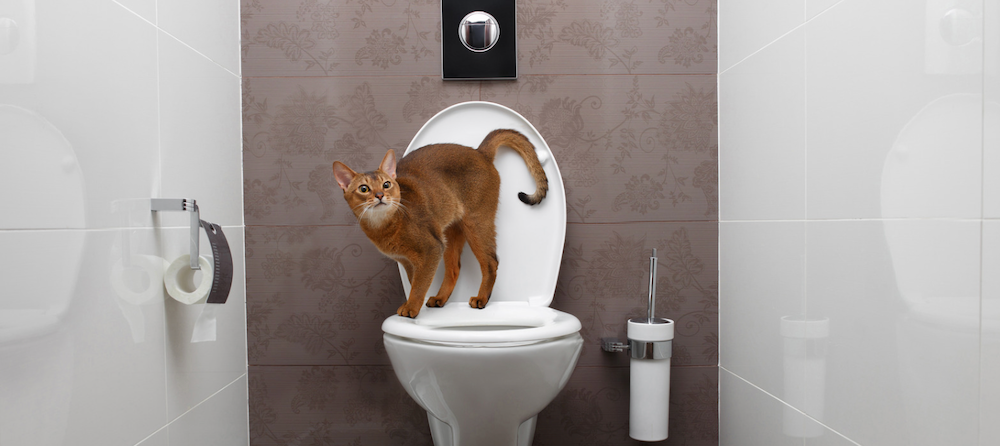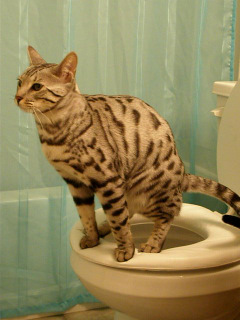The article author is making a number of good points on Don’t flush cat feces down the toilet as a whole in this post just below.

Intro
As pet cat proprietors, it's important to bear in mind how we deal with our feline close friends' waste. While it may seem hassle-free to flush pet cat poop down the commode, this practice can have destructive consequences for both the setting and human wellness.
Alternatives to Flushing
Fortunately, there are safer and more responsible ways to throw away cat poop. Consider the complying with options:
1. Scoop and Dispose in Trash
The most usual method of getting rid of feline poop is to scoop it right into a naturally degradable bag and throw it in the trash. Make certain to use a dedicated trash inside story and deal with the waste without delay.
2. Usage Biodegradable Litter
Go with eco-friendly cat trash made from products such as corn or wheat. These litters are environmentally friendly and can be safely thrown away in the garbage.
3. Hide in the Yard
If you have a backyard, consider hiding feline waste in a designated location far from veggie gardens and water sources. Make certain to dig deep enough to avoid contamination of groundwater.
4. Mount a Pet Waste Disposal System
Purchase an animal waste disposal system particularly designed for pet cat waste. These systems make use of enzymes to break down the waste, lowering smell and ecological influence.
Health and wellness Risks
Along with environmental problems, purging feline waste can additionally pose health and wellness risks to human beings. Pet cat feces may have Toxoplasma gondii, a bloodsucker that can create toxoplasmosis-- a possibly severe ailment, specifically for expectant women and individuals with weakened body immune systems.
Environmental Impact
Purging pet cat poop introduces hazardous pathogens and bloodsuckers into the supply of water, posing a considerable danger to marine ecosystems. These pollutants can adversely influence marine life and concession water quality.
Conclusion
Responsible pet possession prolongs beyond giving food and shelter-- it additionally entails appropriate waste monitoring. By avoiding flushing feline poop down the commode and opting for different disposal techniques, we can reduce our ecological footprint and safeguard human health and wellness.
Why Can’t I Flush Cat Poop?
It Spreads a Parasite
Cats are frequently infected with a parasite called toxoplasma gondii. The parasite causes an infection called toxoplasmosis. It is usually harmless to cats. The parasite only uses cat poop as a host for its eggs. Otherwise, the cat’s immune system usually keeps the infection at low enough levels to maintain its own health. But it does not stop the develop of eggs. These eggs are tiny and surprisingly tough. They may survive for a year before they begin to grow. But that’s the problem.
Our wastewater system is not designed to deal with toxoplasmosis eggs. Instead, most eggs will flush from your toilet into sewers and wastewater management plants. After the sewage is treated for many other harmful things in it, it is typically released into local rivers, lakes, or oceans. Here, the toxoplasmosis eggs can find new hosts, including starfish, crabs, otters, and many other wildlife. For many, this is a significant risk to their health. Toxoplasmosis can also end up infecting water sources that are important for agriculture, which means our deer, pigs, and sheep can get infected too.
Is There Risk to Humans?
There can be a risk to human life from flushing cat poop down the toilet. If you do so, the parasites from your cat’s poop can end up in shellfish, game animals, or livestock. If this meat is then served raw or undercooked, the people who eat it can get sick.
In fact, according to the CDC, 40 million people in the United States are infected with toxoplasma gondii. They get it from exposure to infected seafood, or from some kind of cat poop contamination, like drinking from a stream that is contaminated or touching anything that has come into contact with cat poop. That includes just cleaning a cat litter box.
Most people who get infected with these parasites will not develop any symptoms. However, for pregnant women or for those with compromised immune systems, the parasite can cause severe health problems.
How to Handle Cat Poop
The best way to handle cat poop is actually to clean the box more often. The eggs that the parasite sheds will not become active until one to five days after the cat poops. That means that if you clean daily, you’re much less likely to come into direct contact with infectious eggs.
That said, always dispose of cat poop in the garbage and not down the toilet. Wash your hands before and after you clean the litter box, and bring the bag of poop right outside to your garbage bins.
https://trenchlesssolutionsusa.com/why-cant-i-flush-cat-poop/

I was shown that article about Can You Flush Cat Poo or Litter Down the Toilet? from a friend on another web property. Do you know about anybody else who is inquisitive about the topic? Please feel free to promote it. Thank you for taking the time to read it.
Go Services